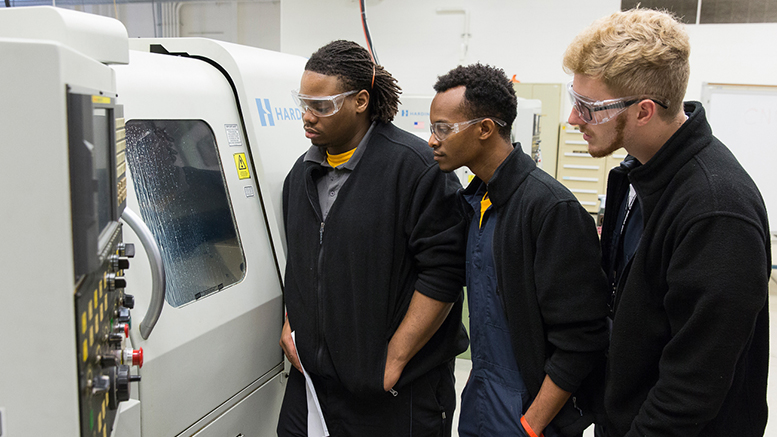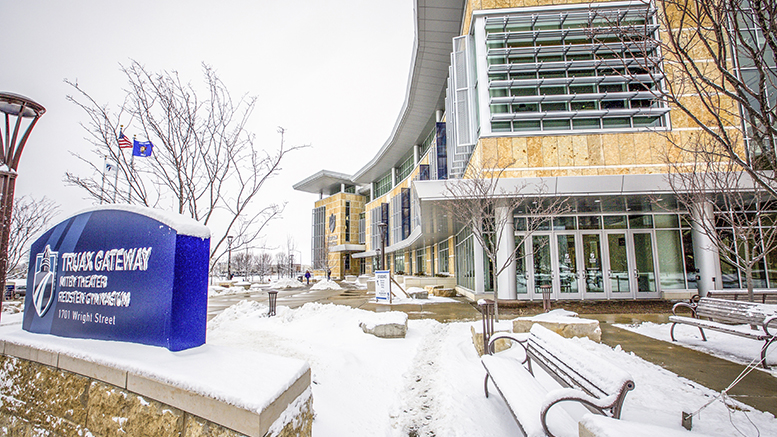When Steven Stoeger-Moore was the risk manager at Milwaukee Area Technical College (MATC), part of his daily routine was to walk around the college’s four campuses to see where potential hazards lay.
One day, he might visit the parking lots to observe traffic patterns. Was there clear signage to help visitors navigate their way safely? Were the lots well paved, or were there potholes or frost heaves that required attention? Another day, he might stroll through the athletic facilities to make sure there was proper supervision, equipment was in good working condition and weightlifters were using spotters.
“There is an old saying that the best supervision takes place where the work is being done,” says Stoeger-Moore, who is now president of Districts Mutual Insurance and Risk Management Services (DMI). “Similarly, the best risk management takes place where activity is occurring.”
This excerpt comes from the February/March issue of AACC’s Community College Journal. Read the entire issue online.
A risk manager’s job is to assess what could go wrong on campus, how likely this is to happen, and what the consequences would be — and then take action to protect the college, its people and its assets. These steps might include introducing new policies and procedures, training stakeholders, instilling a culture of safety, and making sure the college has sufficient insurance to guard against liability.
Assessing and managing risk plays a vital role on community college campuses. While some accidents or injuries may be unavoidable, regardless of how safety-conscious an institution is, effective risk management can limit unfortunate incidents to a minimum.
On the other hand, failure to implement sound risk management practices could be costly. Every dollar spent on liability claims, property damage and high insurance premiums is money diverted from supporting the core mission of teaching and learning. And the human toll of injuries to staff or students can be devastating.
Assessing risk
Accurately assessing risk requires knowing one’s institution inside and out. “Each college environment is unique and carries its own types of risks,” says William Kerwin, who has directed risk management programs for community colleges and high schools in California.
For instance, community colleges with athletic programs have certain risks that others don’t, requiring concussion management protocols and other precautions against sports-related injuries. Colleges that have dual-enrollment agreements with local high schools are likely to have minors on campus, and they should take specific measures to protect this student population — such as making sure employees have undergone extensive background checks.
Because budgets are limited and resources are often constrained, careful risk assessment is essential. Knowing the risks that are most likely to occur can help colleges get the most out of their investment in risk prevention.
“Risk management might only account for 1 to 3 percent of a community college’s operating expenses, but it must be responsible for protecting 100 percent of assets,” says John McLaughlin, managing director of higher education practice for Arthur J. Gallagher Risk Management Services. “Spend wisely, and understand what you’re trying to accomplish.”

When near heavy equipment, safety goggles are a must for students at Milwaukee Area Technical College. (Photo: MATC)
Risk managers have many resources to help them accurately gauge the risks to their college. These include city and county threat assessment and natural hazard mitigation plans, as well as insurance claims data from their own college and for similar institutions.
“Slips, trips and falls consistently rank as the No. 1 area of claims for Wisconsin colleges,” Stoeger-Moore says. “This isn’t surprising, given the nature of Wisconsin winters.” Armed with this information, campus leaders in the state can be proactive by making sure roads and walkways are kept well plowed and salted—and loose carpeting and stair rails are promptly repaired.
“Look at what the loss drivers are, and then come up with mitigation plans to help solve these problems,” he recommends.
Be prepared
One of the core aspects of risk management is preparing effectively for emergencies.
“Often, community colleges lean heavily on local first responders for assistance — especially during the initial phase of response,” says Curtis Liska, who directed security and crisis management for the Kentucky Community and Technical College System before joining Wright State University a few years ago. “So, the first step in making sure you’re prepared is building close relationships with first response agencies.”
Holding regular training exercises helps ensure that everyone on campus knows their role and is prepared to respond during an emergency.
“Training doesn’t always have to be a fullblown exercise with an after-action report. Sometimes, just sitting down and talking through real-world examples can be beneficial,” Liska says. “Take time at the end of emergency preparedness meetings to pull real-world examples that have occurred at other colleges and say, ‘If this happened here, how would we respond?’”
Related article: Creating a cyber-secure campus
While most colleges focus on active shooter drills and responding to natural disasters, leaders shouldn’t overlook the lower profile risks that are more likely to occur on their campuses, Liska says — such as aggravated or sexual assault, as well as mishandling of materials used in teaching or other mishaps.
This is why training should go well beyond emergency drills. For instance, community colleges should include mandatory safety training in all classes where students are working with materials that could be considered dangerous.
Requiring students and staff to undergo extensive safety training can save colleges significant money on insurance premiums, as Coast Community College District in California has found.
Team effort
Stoeger-Moore is fond of saying that everyone on campus is a risk manager, not just the person who holds this title. It takes a total team effort to reduce risks and create a culture of safety.
On one of his walk-arounds at MATC several years ago, he visited a sheet metal lab in which the instructor had his safety goggles resting on top of his head. “I pulled the instructor aside and told him privately: ‘You are setting the wrong example for your students,’” he recalls. “I made it a point to return a few days later, and the instructor and every student was wearing safety glasses.”
Building strong relationships with department heads and supervisors is important, Kerwin says, because it will make them more responsive to feedback on how to reduce risk. But effective communication is a two-way street.
“You have to be receptive to input from others,” he says. “Ask other people for their ideas, because local department heads may have helpful insights. You build trust by doing this over time. Eventually, people will call you with their ideas before you even reach out to them.”

